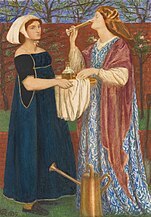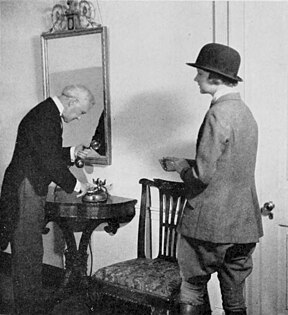A social class or social stratum is a grouping of people into a set of hierarchical social categories,[1] the most common being the working class, middle class, and upper class. Membership of a social class can for example be dependent on education, wealth, occupation, income, and belonging to a particular subculture or social network.[2]
Class is a subject of analysis for sociologists, political scientists, anthropologists and social historians. The term has a wide range of sometimes conflicting meanings, and there is no broad consensus on a definition of class. Some people argue that due to social mobility, class boundaries do not exist. In common parlance, the term social class is usually synonymous with socioeconomic class, defined as "people having the same social, economic, cultural, political or educational status", e.g. the working class, "an emerging professional class" etc.[3] However, academics distinguish social class from socioeconomic status, using the former to refer to one's relatively stable cultural background and the latter to refer to one's current social and economic situation which is consequently more changeable over time.[4]
The precise measurements of what determines social class in society have varied over time. Karl Marx defined class by one's relationship to the means of production (their relations of production). His understanding of classes in modern capitalist society is that the proletariat work but do not own the means of production, and the bourgeoisie, those who invest and live off the surplus generated by the proletariat's operation of the means of production, do not work at all. This contrasts with the view of the sociologist Max Weber, who contrasted class as determined by economic position, with social status (Stand) which is determined by social prestige rather than simply just relations of production.[5] The term class is etymologically derived from the Latin classis, which was used by census takers to categorize citizens by wealth in order to determine military service obligations.[6]
In the late 18th century, the term class began to replace classifications such as estates, rank and orders as the primary means of organizing society into hierarchical divisions.[fact or opinion?] This corresponded to a general decrease in significance ascribed to hereditary characteristics and increase in the significance of wealth and income as indicators of position in the social hierarchy.[7][8]
The existence of social classes is considered normal in many societies, both historic and modern, to varying degrees.[citation needed]
- ^ Grant, J. Andrew (2001). "class, definition of". In Jones, R.J. Barry (ed.). Routledge Encyclopedia of International Political Economy: Entries A–F. Taylor & Francis. p. 161. ISBN 978-0-415-24350-6.
- ^ "The Class Structure in the U.S. | Boundless Sociology". courses.lumenlearning.com. Archived from the original on 28 February 2021. Retrieved 5 March 2021.
- ^ Princeton University. "Social class" Archived 3 December 2013 at the Wayback Machine. WordNet Search 3.1. Retrieved on: 2012-01-25.
- ^ Rubin, M.; Denson, N.; Kilpatrick, S.; Matthews, K.E.; Stehlik, T.; Zyngier, D. (2014). ""I am working-class": Subjective self-definition as a missing measure of social class and socioeconomic status in higher education research". Educational Researcher. 43 (4): 196–200. doi:10.3102/0013189X14528373. hdl:1959.13/1043609. S2CID 145576929.
- ^ Weber, Max (1921/2015). "Classes, Stände, Parties" in Weber's Rationalism and Modern Society: New Translations on Politics, Bureaucracy and Social Stratification. Edited and Translated by Tony Waters and Dagmar Waters, pp. 37–58.
- ^ Brown, D.F. (2009). "Social class and Status". In Mey, Jacob (ed.). Concise Encyclopedia of Pragmatics. Elsevier. p. 952. ISBN 978-0-08-096297-9.
- ^ Kuper, Adam, ed. (2004). "Class, Social". The social science encyclopedia. Taylor & Francis. p. 111. ISBN 978-0-415-32096-2.
- ^ Penney, Robert (2003). "Class, social". In Christensen, Karen; Levinson, David (eds.). Encyclopedia of community: from the village to the virtual world, Volume 1. SAGE. p. 189. ISBN 978-0-7619-2598-9.


